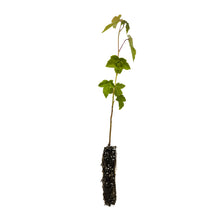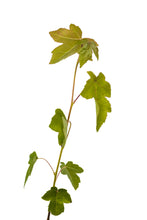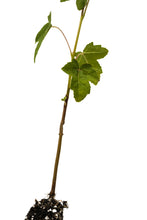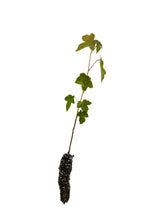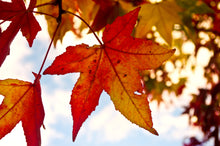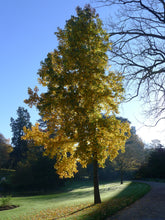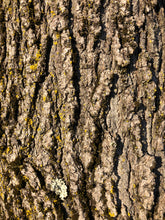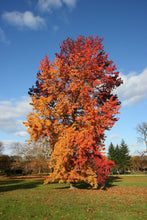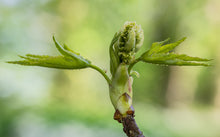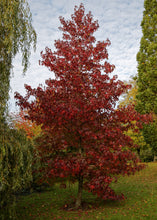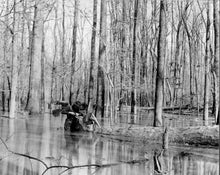
Liquidambar styraciflua
-
Grow your own American Sweetgum, one of the tallest and fastest growing trees of eastern deciduous forests in the U.S.
- 100% guaranteed
- Seed-grown on California's Redwood Coast
- Transplanting and care instructions included
 |
Moisture Medium |
 |
Cold Hardiness -20°F |
 |
Light Full Sun / Partial Shade |
 |
Size 50 – 150' tall / 30 – 75' spread |
 |
Lifespan 400 yrs |
 |
Growth Rate Medium / Fast Growing |
 |
Drought Tolerance Moderate |
 |
Wind Resistance Medium |
About American Sycamore
From the U.S. Forest Service:
"Sweetgum is a large, native, long-lived, deciduous tree that reaches heights of 50 to 150 feet (15-45 m) at maturity. It is easily recognizable by the long-petioled, star-shaped leaves which have five long-pointed, saw-toothed lobes. The brown bark is deeply furrowed into narrow scaley plates or ridges. Young sweetgum trees have long conical crowns, while mature trees have crowns that are round and spreading. Sweetgum is monoecious with the male flowers in several clusters and the female flowers hanging at the end of the same stalk. The ball-shaped fruits contain many individual seed-bearing sections, and persist throughout the winter."About Jonsteen's Seedlings
All of our trees are seed-grown at our nursery on California's Redwood Coast, which is inspected monthly and licensed by the California Department of Agriculture. Trees can provide a natural barrier against high winds, temperatures, noise pollution and soil erosion, all while benefiting local air quality, wildlife and property values — a Jonsteen seedling will only grow in value and beauty!
About Jonsteen's 100% Guarantee
All of our trees are guaranteed to arrive healthy and in good condition. If your tree perishes despite your honest efforts, we will be happy to replace it with a small-sized seedling for just the cost of shipping/handling. You can learn more about our guarantee and tree replacement policy here.
Seedling Size Chart: Small
Due to the dynamic nature of actively growing trees, as well as the tremendous variation between species’ growth rates, we rely on the cubic volume of a seedling’s root mass to determine its “size” (Small / Medium / Large / XL). Within each size there is minor variance — the dimensions provided here represent the category minimum. If exact measurements are essential, please contact us about current stock.













